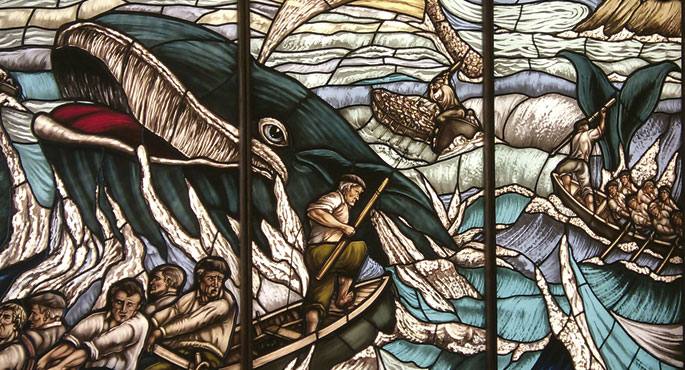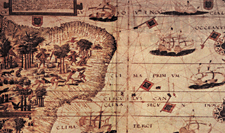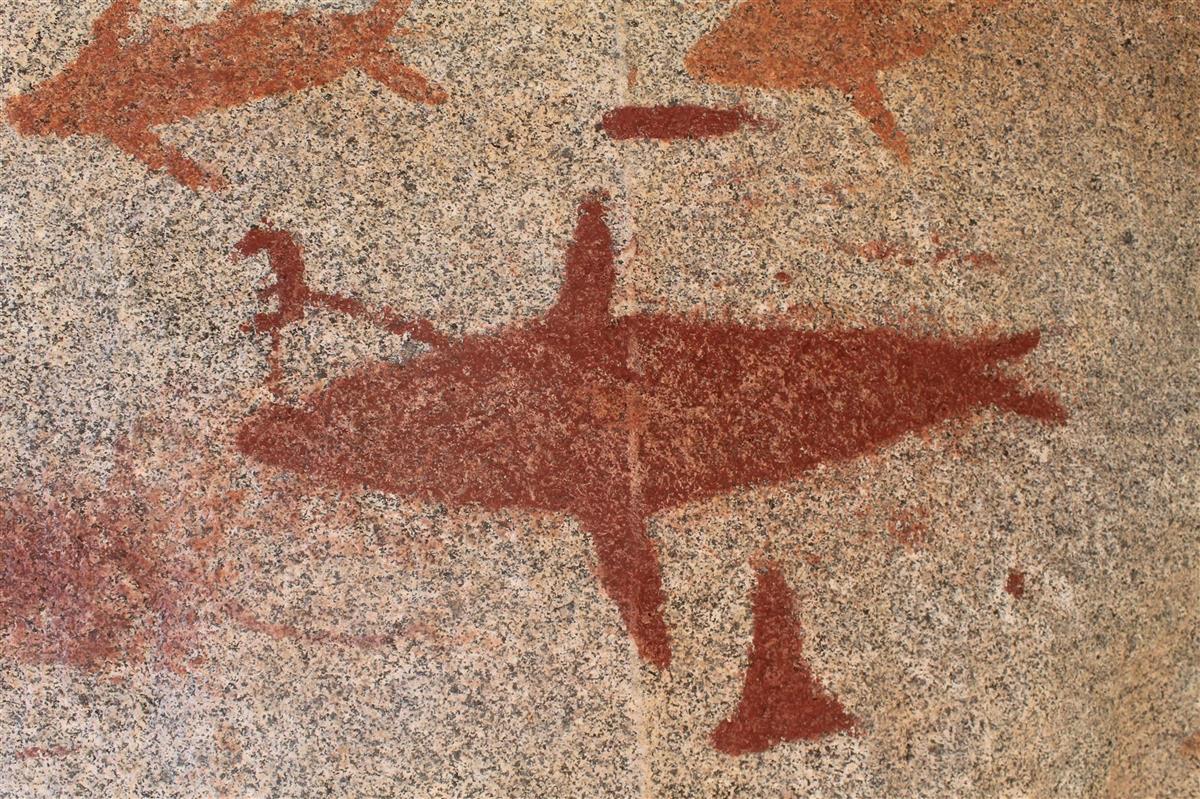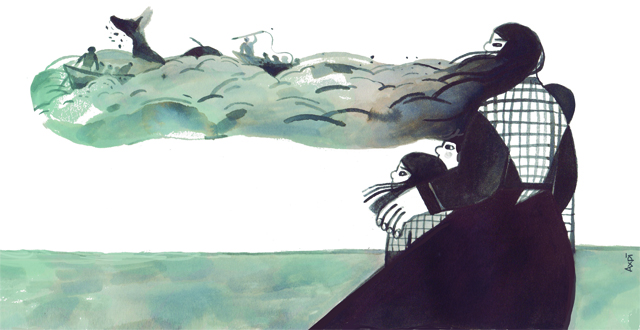The Paths of the Whale
- In the year of Mile nine eun ta llenengo, on the fourth day of May, in front of the bar of the River of Oriyo, the prowess appeared with you... This is what the first verse of a long series says. Orion is still celebrating the capture of the 110-year-old whale. This is the third edition. In 2001 they celebrated their centenary; from then on, the feast of the whale is repeated every five years. Again this year, May 14th.

Through this last whale caught in the Cantabrian Sea, we will visit the area of Orio. Talai Mendi is the name of the mountain that separates the beach of Zarautz from the bar of Orio; in its fields there has been a camping of Zarautz for a long time and the vineyards that make the txakoli of Getaria. This is the wealth of Talai Mendi today. In ancient times, especially in the 17th and 18th centuries, the whales that surrounded the coast of the Basque Country were observed from that watchtower. The same was done right across the slope of Mount Kukuarri, on the other side of the Oria River. From there there is a wonderful view to the west: Barra de Orio, Mollarri Island in Zarautz, Monte San Antón de Getaria and the sea. At that time, whale fishing was a great source of wealth for the people who got it.
At least in 1901, it was profitable for the Orioles. A thousand and two fish were in the body, another thousand and one tongue was in the belly; not much was lost in eating, but six pesetas of a thief was sold.
Shipyards of Orio and Aginaga
It was the last whale caught in the Cantabrian Sea, but how many were before it? There are those who believe that the Basques arrived earlier than Columbus himself on American soil, on the whale trail. To go to the icy seas of Newfoundland in winter, the Basque fishermen needed strong and tough boats. Many of these ships were built in shipyards along the banks of the Oria River. It is still a beautiful plan to go up the river in a small boat to Aginaga, seeing the remains of the old shipyards. In the same Orion we will see the first of them: the Carraballotes, located in front of the town square. Going up the river, we find another in the Ortzaika neighborhood, a small neighborhood that has donated a lot of rowers: the Ortzaika shipyard of the Elizondo people. Continuing up from there, and overcoming the Aginaga border, we arrive at Mapil, which once enjoyed great prestige and strength. You'll take a quiet boat ride up there. Today you have to be careful, because if you neglect it you will be attacked by two swans who defend their place of residence. This is the time (g) to take Ziaboga and return to Orio.
Iron of Agorregi
Before reaching the sea, the last tributary of the Oria River is the river of the Treasury. On the road next to it, leaving behind the famous Cueva del Tesoro, we reach the Errota farmhouse at 500 meters. From the mill there is a simple and beautiful path of two or three kilometers that will take us to the Agorregi ironworks. The road is well marked and there is no risk of losing it. After half an hour of walking, listening to the sound of the water, we arrive to the surroundings of the spectacular ironworks.
This is one of the few old ironworks left in Gipuzkoa. It seems to have been in operation since the 15th century. Only for this reason, due to its strange and spectacular appearance, and the beautiful environment in which it is located, it is worth a visit. Of course, they would have brought too much iron from Agori to make harpoons and anchors for the supply of galleons and other boats made in the shipyards of the Oria River.
Corners linked to the whale
The verses of 1901 are, of course, the most remarkable trace left by the Orion whale, but not the only one. Apart from that, Orion is a society called The Whale, where you will find, in a large mural, elegantly placed on the wood, the 21 verses, next to the spectacular image that perfectly shows the capture of the whale. The square behind the cultural center next to the whale society is also dressed with whale trapping motifs in coloured tiles. And the glass wall of the City Hall’s main hall also elegantly shows the capture of the whale. This is usually used for the background of the photo during celebrations. In the coat of arms of some of the houses of the Calle Alta, the images of the boats that the whale has been capturing appear elegantly. From one side to the other, you can take a whale ride through the streets of Orio. It has happened in favor of the truth, that if the orrel is not to be asked of the genie, we are pleasantly in the rejoicing of the biyotzes, above saying the oriyos without collecting them.
Ez hartu harririk, ez teila zatirik, ez lorerik… ezer! Gure zapatilen arrastoa da zapalduko dugun lurrean utziko dugun bakarra. Ez egin harri pilarik, etorkizuneko arkeologoen lana baldintzatuko duzue eta. Horixe esan zigun Jason Edmundsek ondare kulturalaren zaintzaren... [+]
Bertaratutako euskaldunek Gran Bahia deitu zioten duela mende asko Ternua eta Labrador kasik bateratzen diren Belle Isleko itsasarteari. Arrantzaleek ustezko badia erraldoiaren sarrerako penintsula eta irla-artean ezarri zituzten baleak ehizatu eta euren olioa ateratzeko... [+]
Europako ontziak Ternua eta Labradorreko kostetara baleak eta bakailua arrantzatzera etortzen hasi zirenean, duela jada bost mende, ba omen zen Atlantiar kostetako badiatan nolabaiteko ohore kode bat. Galeoi edo ontziak leku bat hartu eta izendatzen bazuen, beste inork ezingo... [+]
Euskal balezaleen triskantza duela ia laurehun urte jazo zen hilketa ikertzea helburu duen dokumentala da. Txuri eta beltzik gabeko istorio bat, zuria esateko hamaika hitz dituen herrian.
Islandian oraindik geratzen da euskal baleazaleen aztarnarik, baita duela 400 urteko triskantzaren oroimenik ere. Bertako buruzagi baten aginduz hil zituzten hainbat arrantzale euskaldun, eta erreportaje honetan kontatu dizugu gertaturikoa. Argazkion bidez iraganean atzera egin... [+]






















